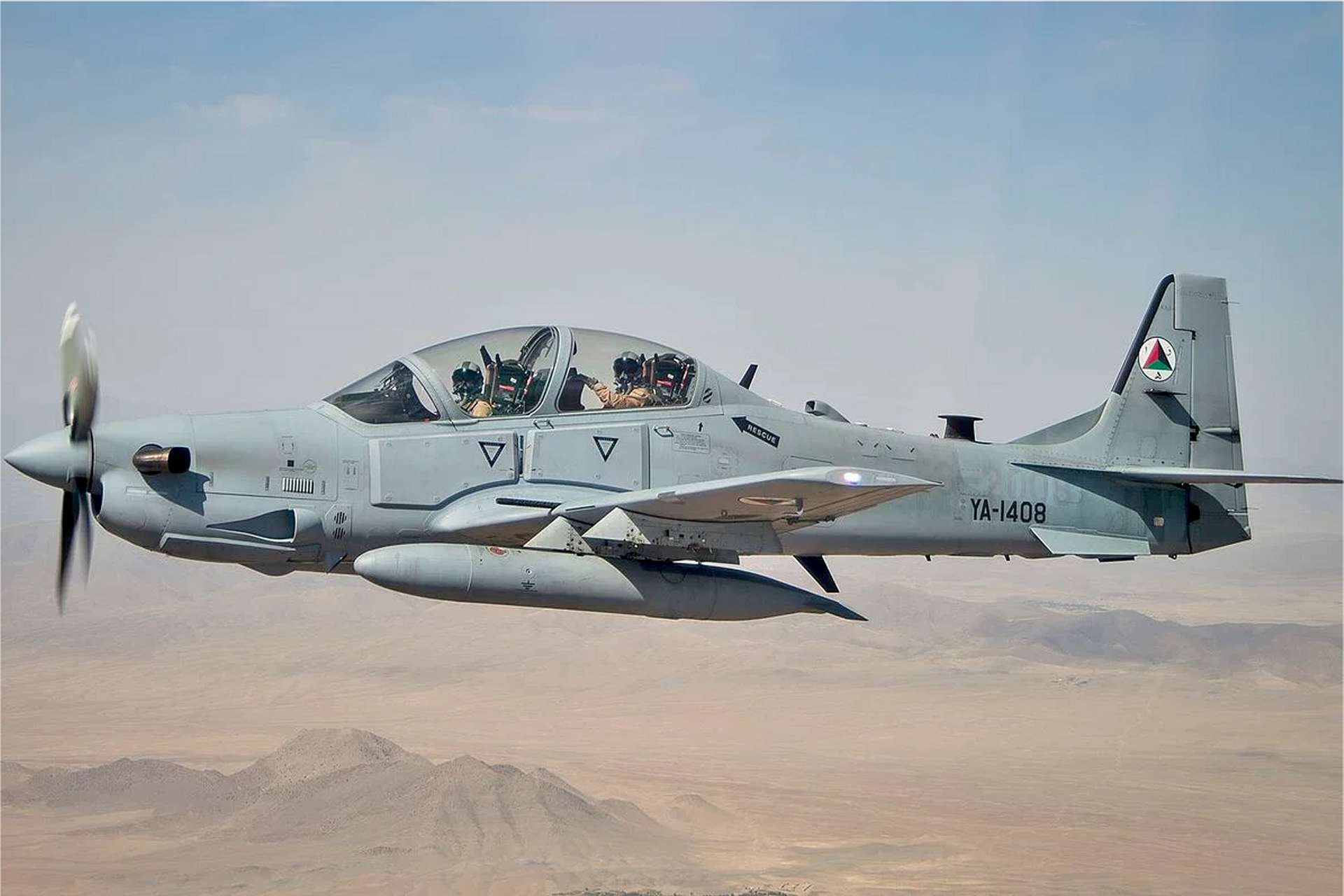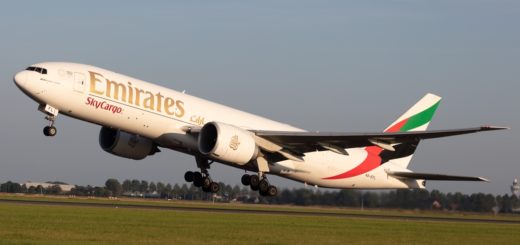Brazilian A-29 Super Tucano Joins US Air Force Test Pilot School Fleet

{loadposition bannertop}
{loadposition sidebarpub}
On October 9, 2024, the US Air Force Test Pilot School, located at Edwards Air Force Base in California, welcomed three new A-29 Super Tucano aircraft to its fleet. This marks the first addition of aircraft to the school in nearly three decades. Initially part of the Air Force Special Operations Command’s inventory, these aircraft were transferred to Edwards to enhance the school’s flight testing and training capabilities in response to evolving operational needs.
Follow Army Recognition on Google News at this link
The A-29 Super Tucano is a military aircraft designed by Embraer. (Picture source: US DoD)
The A-29 Super Tucano, a versatile and cost-effective aircraft, was specifically designed for close air support missions and is equipped with advanced avionics. Its structural design is ideal for spin testing and allows for various sensors and weaponry to be mounted on multiple wing pylons. This flexibility will enable the Test Pilot School to expand its training scope by conducting multi-domain research and testing with a wide range of sensors and equipment, reducing its reliance on T-38 and F-16 platforms. This integration supports the Air Force’s developmental testing missions and contributes to the advancement of capabilities at the Air Force Test Center.
As the Test Pilot School refines its objectives in the context of global competition, it focuses on three main areas: developing a world-class workforce, training critical and adaptive test leaders, and advancing pioneering research. This shift aims to strengthen the school’s contribution to the Air Force’s preparedness and capabilities.
Commenting on the decision to integrate the A-29s into the Test Pilot School, Michael Banzet, Director of Plans and Programs at the Air Force Test Center, stated, “The transfer of the A-29s to Edwards is the result of thoughtful analysis and demonstrates the school’s agility in seizing this unique opportunity. By repurposing this $63 million investment, we not only strengthen the Test Pilot School’s program but also accelerate the deployment of critical combat capabilities for the US Air Force.”
The A-29 Super Tucano is a military aircraft designed by the Brazilian Embraer, primarily intended for advanced pilot training and ground attack missions. Known for its robustness and ability to operate in challenging environments, it serves in numerous air forces worldwide. Its first flight took place on June 2, 1999, and it entered service in 2003. Since then, it has been produced in 293 units as of June 2023, attesting to its success and effectiveness in various military contexts.
This aircraft is powered by a single Pratt & Whitney Canada PT6A-68C turboprop engine, delivering 1,600 horsepower. This engine provides stable performance, allowing it to reach a cruising speed of 520 km/h, with a maximum speed of 593 km/h. With a flight ceiling of 10,670 meters, the Super Tucano is capable of high-altitude missions. It has an operational range of 550 km, which can be extended through additional fuel tanks mountable on three of its external pylons, thereby increasing its range to 2,855 km.
The Super Tucano’s compact dimensions suit it for precision missions. It has a wingspan of 11.14 meters, a length of 11.33 meters, and a height of 3.97 meters, with a wing area of 19.4 m². These features allow for high maneuverability, essential for close air support and light attack missions.
In terms of armament, the Super Tucano is well-equipped for its ground support role. It features two 12.7 mm FN Herstal M3P machine guns mounted in the wings, capable of delivering substantial firepower. Additionally, it has five external pylons for carrying a variety of armaments: two under each wing and one central. These pylons can carry up to 1,500 kg of equipment, including 20 mm cannon pods, 70 mm rocket launchers, as well as conventional and guided bombs. The aircraft can also carry air-to-air missiles such as the AIM-9 Sidewinder, MAA-1 Piranha, or Python 3/4, enhancing its defense and aerial engagement capabilities.
In summary, the Super Tucano is a versatile aircraft, offering a blend of durability, power, and flexibility in various missions. Its design, optimized for challenging conditions and close-range engagements, makes it a valuable solution for air forces seeking to combine training and operational support in a single aircraft.
The arrival of the A-29 Super Tucano at Edwards Air Force Base marks a significant milestone for the Test Pilot School, expanding its operational scope and ensuring its leading role in developing and deploying advanced combat capabilities.

{loadposition bannertop}
{loadposition sidebarpub}
On October 9, 2024, the US Air Force Test Pilot School, located at Edwards Air Force Base in California, welcomed three new A-29 Super Tucano aircraft to its fleet. This marks the first addition of aircraft to the school in nearly three decades. Initially part of the Air Force Special Operations Command’s inventory, these aircraft were transferred to Edwards to enhance the school’s flight testing and training capabilities in response to evolving operational needs.
The A-29 Super Tucano is a military aircraft designed by Embraer. (Picture source: US DoD)
The A-29 Super Tucano, a versatile and cost-effective aircraft, was specifically designed for close air support missions and is equipped with advanced avionics. Its structural design is ideal for spin testing and allows for various sensors and weaponry to be mounted on multiple wing pylons. This flexibility will enable the Test Pilot School to expand its training scope by conducting multi-domain research and testing with a wide range of sensors and equipment, reducing its reliance on T-38 and F-16 platforms. This integration supports the Air Force’s developmental testing missions and contributes to the advancement of capabilities at the Air Force Test Center.
As the Test Pilot School refines its objectives in the context of global competition, it focuses on three main areas: developing a world-class workforce, training critical and adaptive test leaders, and advancing pioneering research. This shift aims to strengthen the school’s contribution to the Air Force’s preparedness and capabilities.
Commenting on the decision to integrate the A-29s into the Test Pilot School, Michael Banzet, Director of Plans and Programs at the Air Force Test Center, stated, “The transfer of the A-29s to Edwards is the result of thoughtful analysis and demonstrates the school’s agility in seizing this unique opportunity. By repurposing this $63 million investment, we not only strengthen the Test Pilot School’s program but also accelerate the deployment of critical combat capabilities for the US Air Force.”
The A-29 Super Tucano is a military aircraft designed by the Brazilian Embraer, primarily intended for advanced pilot training and ground attack missions. Known for its robustness and ability to operate in challenging environments, it serves in numerous air forces worldwide. Its first flight took place on June 2, 1999, and it entered service in 2003. Since then, it has been produced in 293 units as of June 2023, attesting to its success and effectiveness in various military contexts.
This aircraft is powered by a single Pratt & Whitney Canada PT6A-68C turboprop engine, delivering 1,600 horsepower. This engine provides stable performance, allowing it to reach a cruising speed of 520 km/h, with a maximum speed of 593 km/h. With a flight ceiling of 10,670 meters, the Super Tucano is capable of high-altitude missions. It has an operational range of 550 km, which can be extended through additional fuel tanks mountable on three of its external pylons, thereby increasing its range to 2,855 km.
The Super Tucano’s compact dimensions suit it for precision missions. It has a wingspan of 11.14 meters, a length of 11.33 meters, and a height of 3.97 meters, with a wing area of 19.4 m². These features allow for high maneuverability, essential for close air support and light attack missions.
In terms of armament, the Super Tucano is well-equipped for its ground support role. It features two 12.7 mm FN Herstal M3P machine guns mounted in the wings, capable of delivering substantial firepower. Additionally, it has five external pylons for carrying a variety of armaments: two under each wing and one central. These pylons can carry up to 1,500 kg of equipment, including 20 mm cannon pods, 70 mm rocket launchers, as well as conventional and guided bombs. The aircraft can also carry air-to-air missiles such as the AIM-9 Sidewinder, MAA-1 Piranha, or Python 3/4, enhancing its defense and aerial engagement capabilities.
In summary, the Super Tucano is a versatile aircraft, offering a blend of durability, power, and flexibility in various missions. Its design, optimized for challenging conditions and close-range engagements, makes it a valuable solution for air forces seeking to combine training and operational support in a single aircraft.
The arrival of the A-29 Super Tucano at Edwards Air Force Base marks a significant milestone for the Test Pilot School, expanding its operational scope and ensuring its leading role in developing and deploying advanced combat capabilities.







